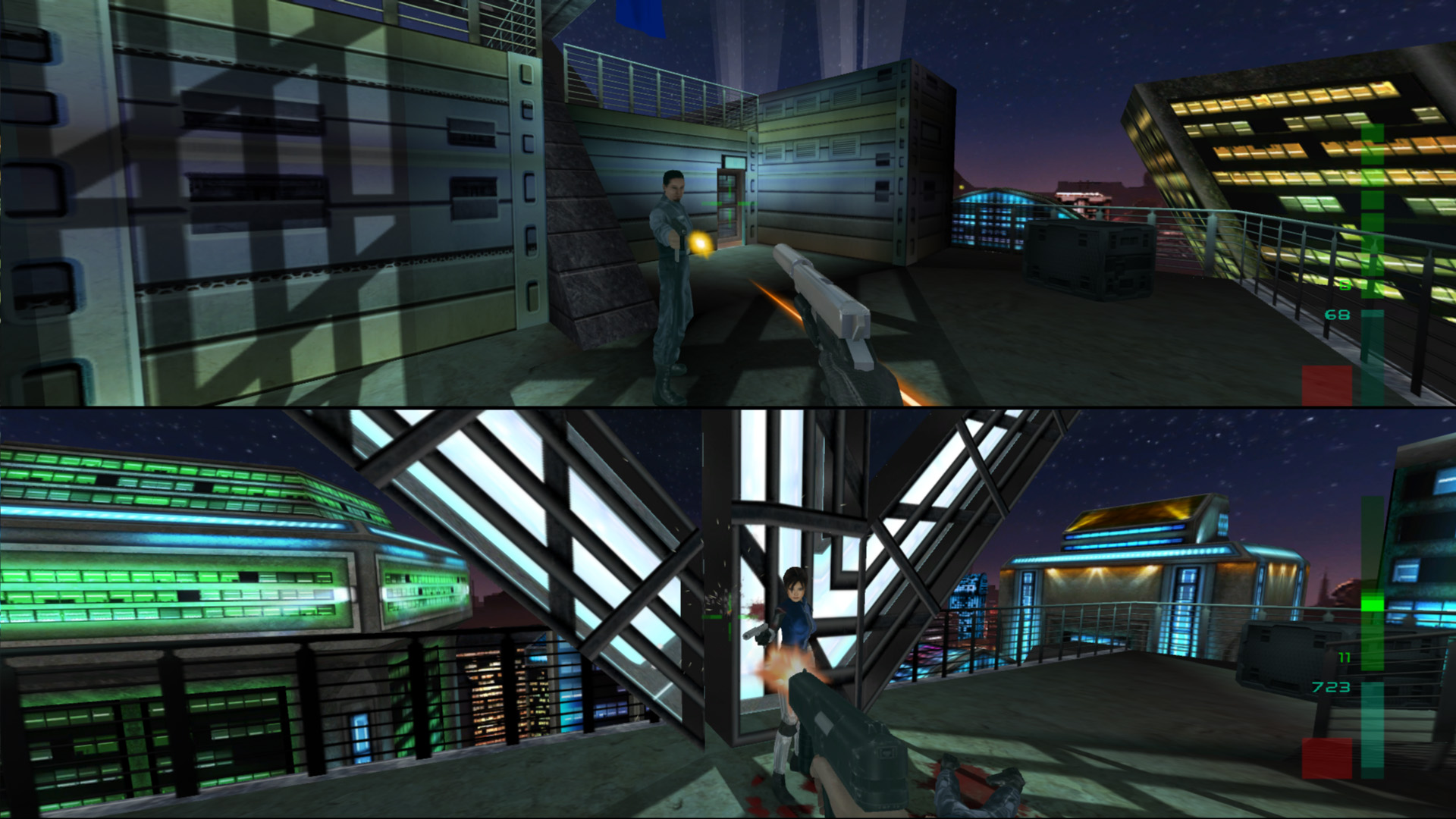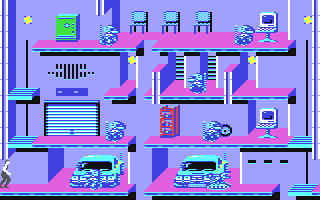JinjoUnchained
Member
Castlevania 2: Simon's Quest: first game with a day/night mechanic?
Castlevania 2: Simon's Quest: first game with a day/night mechanic?
Screaming Meat said:I checked that wiki page. Damocles (not Sword of...) was the sequel. I had it on ye olde Amiga. Loved all those games: Hunter, Midwinter etc.

Responding to my own post about the first use of stealth mechanics, there's another contender from 1981, Sega's arcade game 005:
http://en.wikipedia.org/wiki/005
So I've got that and Castle Wolfenstein so far. And, again, the definition of "tealth" used i probably what determines which game first used it. Do the clouds in the dogfight mode in Combat (Atari 2600, 1977) count as stealth? How about the invisible tank mode? A bit fuzzy.
- Defeating enemies by jumping on them -
A common gameplay mechanic in platformers, this action requires the player to jump or fall on top of an enemy character to hurt, daze, defeat or incapacitate him.
If you want to elaborate more, be much more precise, you can add:
The action must be initiated from a standing or moving position, on a platform or any sort of solid surface, then the player jumps and the simulated gravity pulls him downward onto an enemy, inflicting damage.
And if you want to take Joust out of the equation, add something like:
Additional movement while in air must be limited to horizontal movement or uncontrollable free fall. If the falling motion isn't initiated from a standing position (such as the player is constantly flying) and if there is any additional vertical movement, apart from doublejumping, such as free flying, the game doesn't fit this category.
First appearance: Horace and the Spiders (ZX Spectrum, 1983)
Interesting, but not what I was referring to. From the link, it seems that the day and night sections are separate levels. Or, rather, the same area, but at night. There are countless examples of level-based games with day and night areas, or even day and night versions of the same level (a la Super Mario Bros. 1).
I was more thinking of games without levels which also show the procession of time. Specifically, where a certain amount of in-game time corresponds to real-world time where the environment changes accordingly. In the original Zelda, for instance, you can take as long as you want and the environment stays the same. CV 2 is the first game I can think of where the world changes based upon how long you take as if you were there in real-time.
Interesting, but not what I was referring to. From the link, it seems that the day and night sections are separate levels. Or, rather, the same area, but at night. There are countless examples of level-based games with day and night areas, or even day and night versions of the same level (a la Super Mario Bros. 1).
I was more thinking of games without levels which also show the procession of time. Specifically, where a certain amount of in-game time corresponds to real-world time where the environment changes accordingly. In the original Zelda, for instance, you can take as long as you want and the environment stays the same. CV 2 is the first game I can think of where the world changes based upon how long you take as if you were there in real-time.
First game to have multiple endings in the story?
Interesting, but not what I was referring to. From the link, it seems that the day and night sections are separate levels. Or, rather, the same area, but at night. There are countless examples of level-based games with day and night areas, or even day and night versions of the same level (a la Super Mario Bros. 1).
I was more thinking of games without levels which also show the procession of time. Specifically, where a certain amount of in-game time corresponds to real-world time where the environment changes accordingly. In the original Zelda, for instance, you can take as long as you want and the environment stays the same. CV 2 is the first game I can think of where the world changes based upon how long you take as if you were there in real-time.
I dream that you guys will put together all of these firsts, and then dissect modern games, showing where their gameplay originally comes from. So, something like CoD would include, first FPS, first jumping, first health pack, first deployable health pack, etc. Like DNA or a family tree of some kind. Surely someone could visualize this well.
Once all the heavy lifting was done, you could produce the entire genome of each game that comes out, based entirely on various game play elements.
How do you define "cinematic elements"?
Just to name one (and probably not the first), Secret of Monkey Island (1990) had similar dialogue options:
Stormlord (C64, 1989) gets my vote (if you don't include the awful strip poker games).
Thanks all. It's crazy how many of those games slipped under the radar back in the day. Not to mention, I always thought BMX XXX was censored, but it turns out all I saw the the PS2 version. Crazy how the Gamecube version was actually uncensroed. Go Nintendo!Definitely not.
There's Panesian's games for the NES (Bubble Bath Babes et al.), released in 1991: http://en.wikipedia.org/wiki/Bubble_Bath_Babes
Divine Sealing for the Genesis, from 1991 (NSFW screenshots): http://www.mobygames.com/game/genesis/divine-sealing
Strip Fighter 2 for the PC Engine, from 1993 (NSFW screenshots): http://www.mobygames.com/game/turbo-grafx/strip-fighter-ii
And of course the Atari porn games, but I don't think they really count.
And even if we only include officially-licensed games released in North America, there's still BMX XXX (2002): http://en.wikipedia.org/wiki/BMX_XXX
maybe first but certainly not the only one.
Both GT5 and 6 have manually operated wipers.#
speaking of that, GT5 and 6 both also have a dedicated button for flashing the headlights.
There is allready a buttong tio Switch between low and headlights, but you can also use a seperate button for flashing the lights.
Pole Position from 1982 was the first racing game with real world tracks and the first to introduce qualifying
Nah not quite that.
In Secret of Monkey Island the dialogue are presented over a still images (sometimes with simple animations) similar to visual novel, while in KoTOR the dialogue choices are played out over a scene where your player character shows expressions, gesture, and sometimes doing some activities. To some extent, kotor way of presenting dialogue choices could be called interactive cut scenes which also influences many games such as Heavy Rain, TellTale games, etc.
Anyone knows which was the first game to have an in-game car radio that you could where you could change stations at will?
Nah not quite that.
In Secret of Monkey Island the dialogue are presented over a still images (sometimes with simple animations) similar to visual novel, while in KoTOR the dialogue choices are played out over a scene where your player character shows expressions, gesture, and sometimes doing some activities. To some extent, kotor way of presenting dialogue choices could be called interactive cut scenes which also influences many games such as Heavy Rain, TellTale games, etc.
Deus Ex at the very least did that earlier
EDIT:
Outrun?


I also think Goldeneye was the first FPS that had different damage when you shot different parts of the body.
I also think Goldeneye was one of the first games that had 'state' base AI, which was a year later really popularized in stealth games like Thief. State base AI as in ( Even if those states were simplified), the enemies have vision, do not hear silenced weapons, and don't just run at you when you get close to them.
That goes way back to Metal Gear in 1987.
That goes way back to Metal Gear in 1987.
I remember the first track in Rad Racer more from Strong Bad than the actual game... and I actually owned the game in the NES days. It's called "Sunset Coastline". I can't even remember if I ever knew the music was there until I stumbled upon it 10 years ago when I rebought the game from GameStop. I remember being shocked that I never knew it. Fortunately HomestarRunner was still going strong and it was fresh in our memories. Else I would have thought it was familiar but not known where I'd heard it.Nope. Out Run did have a radio that you could select between three different music tracks, but that could only be done before the start of a race and not while the game was in progress. .
Though one early game that I can think of that did have a 'radio' was Rad Racer for the NES:


By pressing down on the D-pad while racing, you could cycle between four different music tracks. This game was developed by Square Soft and released in 1987. But I am not sure if this is the first game to have an in-game radio, though.
Die by the Sword (1998) had a pretty unique melee fighting system. By freely moving the character's right hand using the mouse you could quickly swing the mouse from left to right (or any direction) and the force of the blow would damage the enemy depending on the speed and region of the inflicted blow, with body dismemberment.
Has there been a similar example before this game, maybe even 2D or some arcade game with a special controller?
On consoles, Bushido Blade (1997) had a first-person mode and was the first game (along with Tobal 2)) to support the PS1 analog controller, so you could make sword attacks in 360 degrees, with varying degrees of force depending how far the stick is pushed.
https://www.youtube.com/watch?v=yzgJzM3IcSI
Not quite as much precision as that mouse example you gave, though, and it wouldn't surprise me if an arcade game preceded it.
I'm pretty late to this thread and I don't know if this counts but night trap caused the development of a rating system for games.
For racing games, I believe Need for Speed: Porsche Unleashed in the only racing game (not hardcore racing sim) that lets you map buttons to control corner lights.
Also Test Drive unlimited lets you open/close your windows.
Anyone knows which was the first game to have an in-game car radio that you could where you could change stations at will?

Actually, I'm pretty sure that would be Castle Wolfenstein 1981 on the Apple ][.I think Impossible Mission on C-64 was the first home-videogame to feature digitized speech (in absolute terms it was Berzerk I believe)?
It was also a fuckin' masterpiece

Actually, I'm pretty sure that would be Castle Wolfenstein 1981 on the Apple ][.
Metal Gear was the first stealh game in 1978, in fact Kojima wanted an action Rambo-like game, but the MSX2 wasn't strong enough to display enough guys to shoot and bullets, so he opted for a stealthy approach and then the infiltration genre began.
We have debunked this one multiple times already. Castle Wolfenstein and 005 (arcade game), both from 1981, predate Metal Gear by several years.
Wonfenstein a stealth game? Since when? Many mistake the first FPS for doom but Wolfenstein is the real first FPS, I don't think this game has stealth behind its concept, maybe if someone wants to play it in a stealthy way, but like that even GOW can be played in a stealthy way while it is not intentend to be. I don't know about 005, when I google it I get NSFW photos lol.
